Canada Remembers Times - 2006 Edition - Page 4
Canada and International Peace Support Operations 50 Years and Counting...
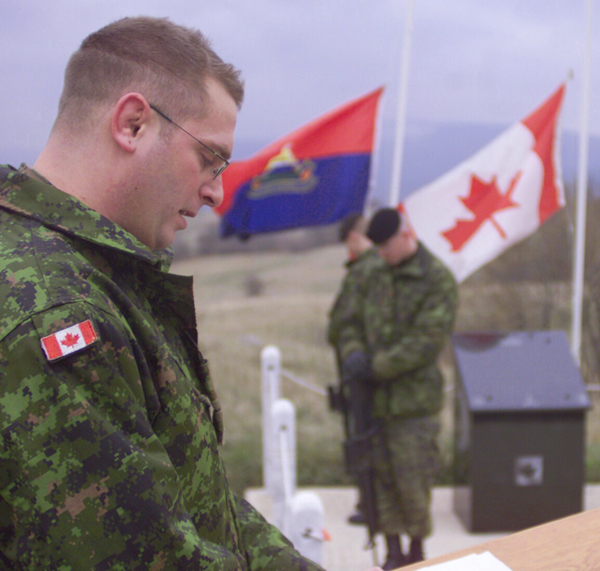
Photo: DND
2006 marks a special milestone in the international pursuit of peace. This is the 50th anniversary of large-scale United Nations (UN) peacekeeping efforts - the pioneering approach to diffusing conflicts by sending in neutral forces to monitor ceasefires and nurture peace in regions of the world in turmoil. Canada has been involved in these peace support missions from the beginning, dating back to the Suez Crisis. This 1956 Middle East standoff between Egypt on one side and Israel, Britain and France on the other threatened to draw the world into war.
The situation was extremely tense and the UN worked to find a solution. Canada would play a pivotal role in dealing with the crisis, suggesting an approach which would have a lasting impact in the way the international community deals with unrest in different corners of the globe.
Lester B. Pearson, Canada's Minister of External Affairs and future Prime Minister, proposed that a multinational force drawn from UN countries (including Canada) would go to Egypt to enforce a cease-fire and oversee the pull out of foreign forces. This idea would have a huge impact on the way the world responded to conflicts and would help define Canada's international military role for the next five decades. In recognition for his contribution, Pearson was awarded the 1957 Nobel Peace Prize.
Where in the World?
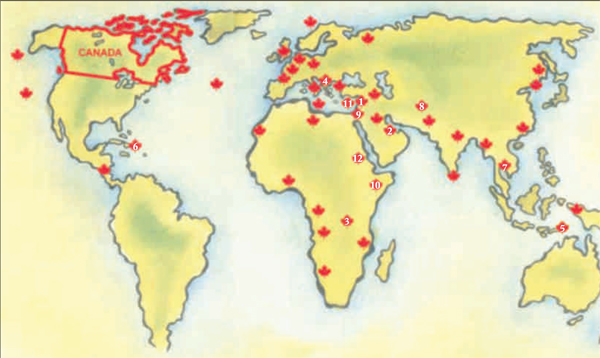
Part of sharing stories is knowing where the stories take place. Canadians have served around the globe over the past century, putting their lives on the line to help restore peace and freedom to countries in turmoil. Let's see if we can find where some of these places have been...
Here is a world map with maple leaves representing some of the places in which Canadians have served in times of war, military conflict and peace. Match the names of the countries where Canada has taken part in peace support operations over the past 50 years with the correct numbers on the map.
- Egypt: 1956-67; 1973-78; 1987-present
- Cyprus: 1963-92
- Cambodia: 1972
- Syria: 1978-present
- Persian Gulf: 1990-91
- Bosnia: 1991-97
- Somalia: 1993-96
- Rwanda: 1994-95
- Haiti: 1995-98; 2004
- East Timor: 1999-2001
- Ethiopia and Eritrea: 2000-03
- Afghanistan: 2001-present
Canadian Tradition of War Art Continues
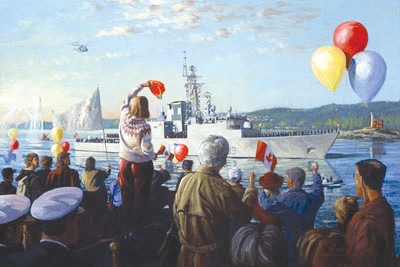
"Homecoming" - image courtesy of John Horton
Since the days of the First World War, Canada has had artists create works that capture the efforts of our soldiers, sailors and air force personnel as they serve and sacrifice in the cause of peace. The Canadian Forces Artists Program continues this tradition today and has resulted in a fresh collection of artwork. This painting is by John Horton and shows the HMCS Algonquin being enthusiastically greeted on its return home from the waters off Southwest Asia in October 2002.
Canadian Peacekeepers Under Fire in Cyprus
From 1964 to 1993, Canadian Forces members served in Cyprus, working to maintain an uneasy peace between the Greek and Turkish populations of the Mediterranean island.
In 1974, the situation boiled over when 40,000 troops from Turkey invaded Cyprus and active fighting broke out. In the days following the invasion, Canadian UN peacekeeping troops suddenly found there was no peace to keep. On July 23,1974, in the midst of this chaos, a group of Canadian soldiers came under fire in a rocky gully. Several men were hit, including the officer leading the patrol. Private Joseph Plouffe went at once to try to give the injured officer first aid but was wounded as well. The two injured Canadians were left in a very vulnerable position and threatened by machine gun fire. Corporal Joseph Whelan and Privates Joseph Belley and Joseph Pelletier would not leave their comrades and braved the shooting to rescue the wounded men.
Master Corporal Mark Isfeld and his "Izzy Dolls"
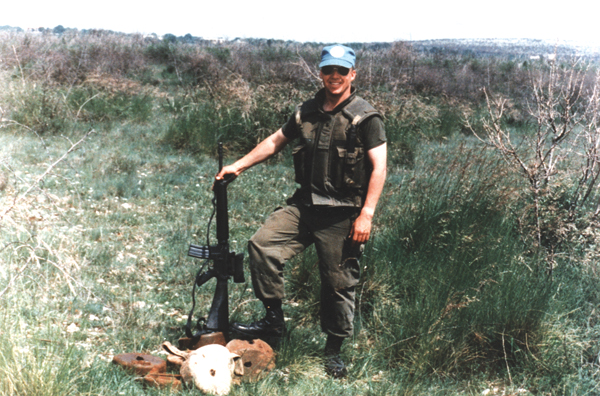
Mark Isfeld - photo courtesy of Isfeld family
Canadian Forces members have put their lives on the line countless times in the course of international peace support efforts over the years. Approximately 125 have paid the ultimate sacrifice. One of these was Master Corporal Mark Isfeld, a combat engineer who lost his life in Croatia on June 21, 1994, in a landmine explosion. It had been his third tour of duty in a peace mission within a three-year span.
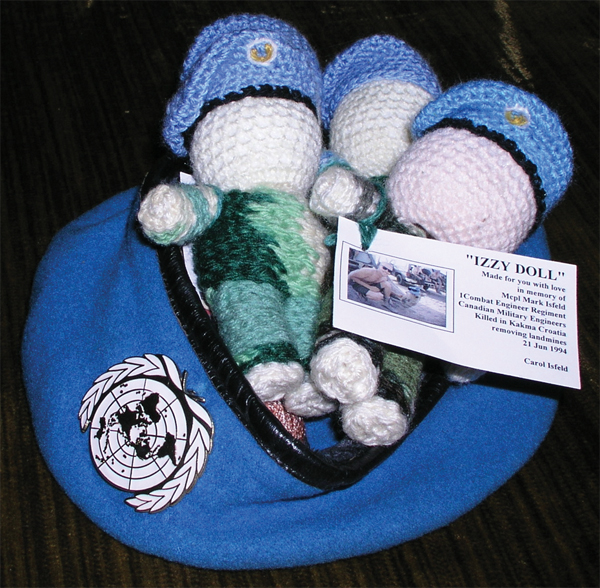
"Izzy Dolls" - photo courtesy of Isfeld family
In addition to his important work in removing mines so they could no longer hurt anyone, Isfeld was known for distributing small homemade dolls of little peacekeepers to the young people living in the conflict areas where he served. After his death, other soldiers took up this work and began to call them "Izzy Dolls."
- Date modified: